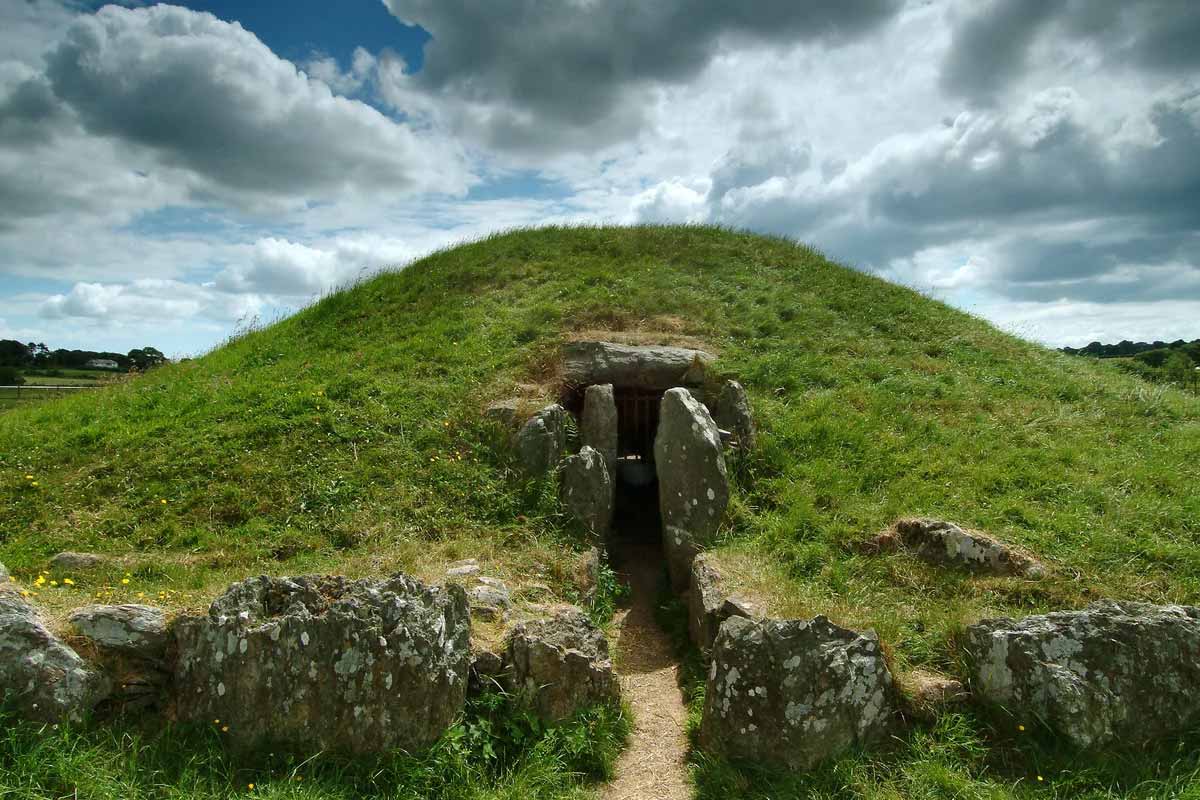Something timeless stirs where stone meets silence. Archaeologists have opened a window onto a vanished world, its corridor sealed, its offerings undisturbed. Inside this tomb, craftsmanship, ritual, and memory gather in one place. Tools whisper of skill, ornaments hint at status, and bones mark a community’s bond with its dead. Because preservation is rare, every slab and shard reads like a line of text. The scale inspires, yet the intimate details captivate. What emerges is a story still being written.
A megalith in Málaga with rare completeness
Set within Málaga’s hills, the megalith rises from layered earth and stone. The tomb dates to roughly 5,000 years ago, within the third millennium B.C.E. Builders set huge blocks upright, then sealed them with covering slabs. The structure stayed intact. So, archaeologists can read its architecture with unusual clarity.
The corridor extends about 42 feet in length, long by regional standards. Vertical orthostats stand more than six feet high, and they frame the passage. Inside, builders created several compartments, each bounded by slabs. Teams can test how careful space guided rites and movement, because rooms survive.
Large horizontal stones once roofed the passage, now lost in parts. Above the cover, workers heaped a tumulus of sand and small stones. Specialists classify the monument as a dolmen, a megalithic passage grave. That form repeats across Iberia, so comparisons can suggest shared choices and values.
How the tomb was built and used over generations
Teams from the University of Cádiz excavated the site across several seasons near Teba. Evidence shows collective burial, since rooms held many people across time. Researchers call these rooms ossuaries, because bones gathered in them. Remains cluster by zones, so the layout likely organized rites and memory.
Grave goods ranged from humble to elite, and they speak with force. Teams logged ivory and amber, while they also recorded seashells carried inland. They found flint arrowheads and large blades, then identified an exceptional halberd. Because tools and ornaments travel, objects trace exchange routes and social status.
Builders likely raised each orthostat first, then spanned the gaps with slabs. They later heaped the mound, while they shaped a clear approach. Groups entered, placed offerings, then returned remains to shared rooms. The tomb staged these steps, so its plan still maps rhythm and meaning, and faith.
What the discovery reveals about belief, trade, and life
Preservation is outstanding, so researchers can study daily life with unusual detail. The monument holds tools, ornaments, and architecture in one readable place. Its walls and rooms record choices about light, entry, and order. Scholars learn from the site, and the tomb helps model regional practice and belief.
Seashells appear far from the coast, and they speak of distance. Teams suggest inland groups prized the sea as a mark of status. Shells traveled, so routes must have linked valleys and shores. Trade moved amber and ivory as well, and it bound communities across long ranges.
Comparable monuments did more than host burials in some regions. People met there for ritual, and they watched the sun in season. Others used the structures as shelters or boundary markers for fields. Roles can vary, so each structure needs very careful context before any firm labels.
How this tomb compares with famous megaliths across Europe
Spain hosts the Dolmen of Guadalperal, often called the Spanish Stonehenge. During drought, waters recede and the monument rises into view, according to reports. Its stones line a long corridor that once led to a chamber. That visibility shows how climate now shapes which megaliths we can study.
Across the Channel, Arthur’s Stone in England stands on a ridge. English Heritage dates the structure to over 5,000 years old. Nine uprights support a massive capstone weighing an estimated 27 tons. Although much was lost, the site still anchors enduring stories that quietly echo through time.
Against these landmarks, Málaga’s discovery impresses through completeness and scale. Its length reaches about 13 meters, and its orthostats rise above two meters. A scholar calls it among Andalusia’s most monumental and complete sites. The tomb preserves rooms and cover details, so study can reach fine, human choices.
Methods, partners, and the road ahead for research
Fieldwork relies on careful recording, since context gives objects their voice. Teams map every slab and layer, and they closely track each contact. They will sample soils, then run radiocarbon tests on select remains. Results converge, so materials, dates, and craft link into one readable timeline together.
University of Cádiz researchers lead the project and guide training on site. Local partners support the work, according to regional reports. Backers include the Junta de Andalucía, the municipality of Teba, and Fundación Palarq. Because students learn in the field, skills grow while knowledge expands for the region.
Laboratories will examine ivory and amber, and they will source each piece. Lithic experts will study flint arrowheads, blades, and the halberd. As patterns emerge, teams can refine timelines for southern Iberia. The tomb preserves context, so results can link identities, craft, and movement with care throughout.
Why this discovery will reshape questions we ask about prehistory
From Málaga’s hills, a patient structure restores a vanished world step by step. The site kept its form, so people, craft, and exchange return to view. Objects will speak to distance, status, and skill as labs work. The tomb also teaches method, since context survives. Shared stories grow clearer as new seasons advance, without losing their depth. Findings here can guide wider debates on ritual, memory, and power. The human story stands closer, not smaller, beside it.
